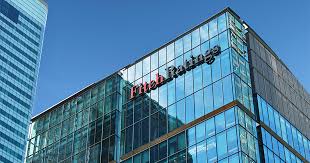Sovereign still the key pressure on South African bank ratings

South Africa’s sovereign rating (BB-/Negative) remains the key pressure on the country’s bank ratings, Fitch Ratings says, as aggregated banking sector data for end-2020 published by the South African Reserve Bank shows that pandemic-related effects on asset quality and earnings should be containable.
The economic consequences of the pandemic hit asset quality and earnings significantly in 2020 but the impact was in line with our expectations and is reflected in current ratings.
- Advertisement -
The sector’s impaired loans ratio increased to 5.2% at end-2020 from 3.9% at end-2019 as the sharp economic contraction, lockdown measures and rising unemployment pressured corporate and retail borrowers’ repayment capacity.
- Advertisement -
Read More:
Debt relief to customers, which covered about 20% of gross loans at end-1H20 on average across the four largest banking groups, limited the increase in impaired loans and cushioned the impact of the pandemic on asset quality. But we expect the impaired loans ratio to increase further to 6.5% at end-2021 due to the unwinding of debt relief measures, rising unemployment and a challenging business environment.
Profitability weakened significantly in 2020, with the sector’s operating return on risk-weighted assets declining to 1.2% from 2.8% in 2019. This was driven by a surge in loan impairment charges (LICs) and, to a lesser extent, pressure on net interest margins (NIMs) and non-interest revenue.
The substantial increase in LICs, which was concentrated in the second quarter and which tapered off in the second half, was driven by specific provisions against impaired loans and substantial provisions incurred as a result of forward-looking macroeconomic assumptions and management overlays.
- Advertisement -
We expect the operating return on risk-weighted assets to improve to 2.3% in 2021 as the pace of provisioning slows. However, a recovery to pre-pandemic levels will not occur before 2022 as LICs will remain high, low interest rates will pressure NIMs and subdued demand will stifle revenue generation.
The sector’s common equity Tier 1 (CET1) capital ratio recovered to 12.6% at end-2020 from 12.1% at end-1H20, having declined following the onset of the pandemic. We expect capital ratios to remain stable in 2021, despite higher risk-weighted assets as asset quality weakens.

Muted loan growth, a recovery in earnings and continued dividend prudence will support capital ratios, which are comfortably above regulatory requirements. Funding and liquidity will remain stable and are a rating strength for South African banks given their solid deposit franchises and low reliance on external funding.
However, the ratings of all South African banks under our coverage remain constrained by the sovereign rating given the concentration of their activities in South Africa and high sovereign exposure relative to capital.
Sovereign exposure, mainly local currency South African debt securities held for liquidity management purposes with small amounts of public sector lending, was equivalent to double the banking sector’s equity at end-2020. The Negative Outlooks on the banks’ ratings reflect that on the South African sovereign.
- Advertisement -


